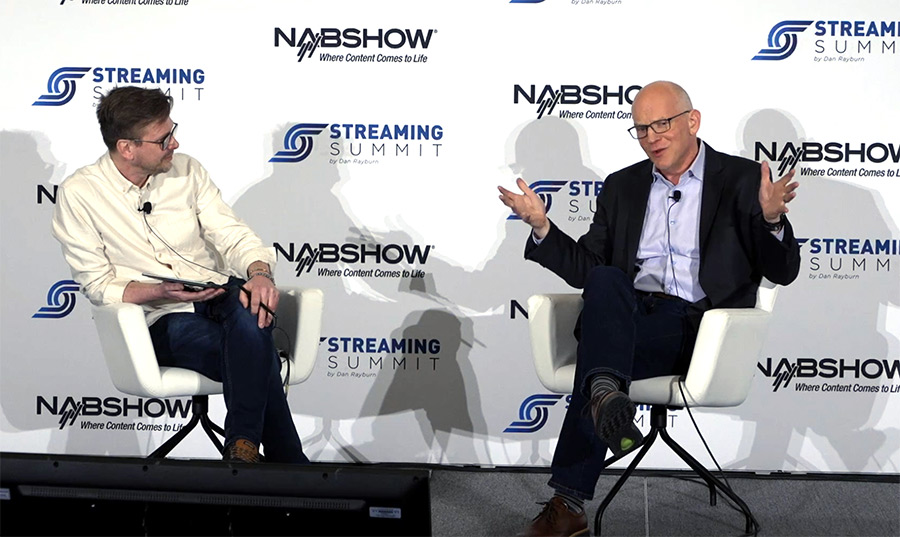TV operators have long sought to deliver high-quality, personalized media services to their subscribers as a valuable add-on to their fixed broadband and mobile packages. However, this is no easy feat; media is expensive and complicated to deliver through networks in the right quality and with low latency. For this reason, telcos and operators have spent the past few decades building legacy systems with multiple generation set-top-boxes (STBs). Now, however, these systems have outlived the rapid pace of innovation seen across the rest of the media industry.
For many operators, STB populations remain in the millions, creating strain on their venture to move across to cloud architectures and the benefits they bring. There is a common ambition among telcos and operators to move to entirely unicast OTT streaming on smart devices and TVs. Although the journey may be long, there is ample opportunity for telcos and operators to transform their legacy business and maintain the value of their commercially important media functions.
Realizing the value of public cloud
Public cloud migration is well underway for many telcos and operators. However, they still have a long journey to fully modernize their operations and services as they continue to operate and integrate their legacy assets and systems. The biggest challenge lies in assessing and, more importantly, in successfully addressing the market potential of their own media service offering. Which customers should they be targeting? How can they address them in the best way? What are end-users willing to pay? What USPs do they have over their competition? When making their “make or buy” decisions, they must decide which areas to build themselves versus buying from a partner. In any case, they will also need a trusted partner to help them through this complex migration and transformation.
Once they have established the market they want to grow their media service, it’s vital to create a blueprint that maps out their journey from legacy infrastructure to the cloud. They must have an agreed architecture and journey route with trusted technology partners guiding them region-by-region.
There is great complexity in delivering a high-quality and low latency video service across any network to any device. As such, one of the biggest challenges for operators lies in finding a trade-off. Do they select a central solution that follows a single blueprint to reach scale advantages and cost benefits (as well as the lower production and operating costs)? Or do they opt for a decentralized and more custom solution with options to tailor it and differentiate locally or regionally?
It’s within this dilemma that operators must face a radical shift in mindset – that of a migration from one-time capital expenditure (CAPEX) purchases to rolling operational investments (OPEX) based on software and public cloud infrastructure.
Opportunities as aggregators of media services
Media is a growing market for many of the telcos and operators MediaKind works with. With more subscribers signing up to their services and new content deals coming in – particularly with regards to live sports and other event-based content – they are now looking for new ways to engage and monetize their subscribers through personalized and compelling content offerings.
Orange Belgium, for example, recently looked to MediaKind to enrich its consumer experience across all its smart devices, from mobiles and tablets to main television screens. MediaKind’s Video Storage and Processing Platform (VSPP) and Encoding Live solutions are enabling a series of new targeted services launching across Orange Belgium’s devices, unifying its entertainment offering with live TV and streaming apps, Google Assistant voice search, and Chromecast built-in.
Offering a highly personalized service with technologies such as Dynamic Ad Insertion is made much more feasible when operators reach a true unicast state. Then, they can send individual adverts to viewers on a one-to-one basis and truly target their content delivery. Once they’ve achieved this, the monetization potential of their assets skyrockets. That could be in terms of building a loyal customer base or expanding their media offerings towards new services such as gaming, metaverse, or other interactive formats.
Embracing super aggregation
The other way telcos and operators are building big in the media space is by transcending the role of super aggregators of media content. As a tidal wave of existing and new streaming services emerges and a growing number of direct-to-consumer (D2C) services from brands and content owners roll out, telcos and operators are starting to find ways to aggregate these brands within their own platforms. It means they can offer an easy way to cross-search the content viewers want without needing to dip in and out of multiple separate interfaces.
The current content consumption experience is in reverse – I know from personal experience that it’s easy to spend half an hour searching for content and only 20 minutes watching it! To reverse this trend, telcos and operators can be the guide for their customers, enabling them to discover content that’s relevant to them across a broad spectrum of services in one unified interface. Here, the biggest frontier lies in overcoming content rights and licensing issues and integrating with content owners. However, there’s an exciting opportunity to create a differentiated look and form within a consolidated service, utilizing a bespoke UX and UI.
Partners are the key to driving the future of media
It’s fair to say telcos and operators have a complicated path to navigate as they embark on a monumental transition of their legacy infrastructure and operational mindset. However, many opportunities are available for those who get it right. By relying on trusted technology partners that can take them towards ideal multi-tenant, public cloud platforms, they can focus on acquiring assets and licensing of their own that drive them towards their future as media service aggregators.
The possibilities in this future are yet to be benchmarked. From TV and films to gaming to news and entertainment, telcos and operators have an opportunity to become the consumer home of all streaming experiences and trusted media providers for audiences worldwide. By trusting the roadmaps laid out and relying on public cloud-based technologies, the exciting future of media delivery may be closer than they realize.



